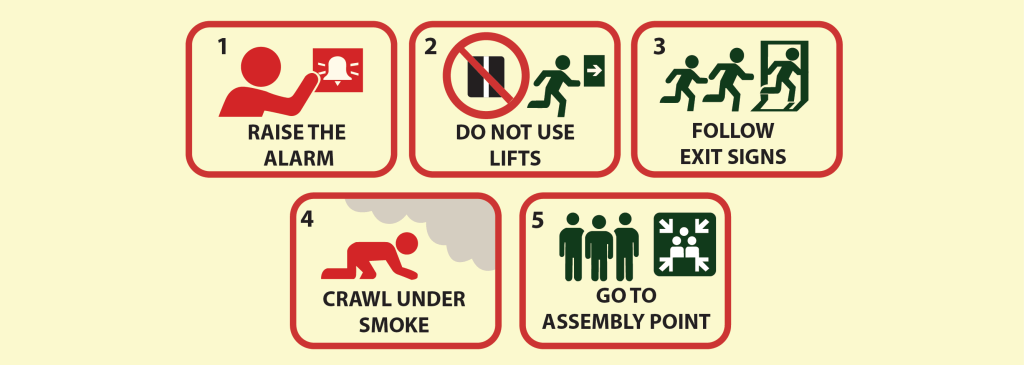Fire Safety Planning for Educational Institutions
Schools, colleges, and universities are more than places of learning — they are vibrant communities filled with students, staff, and valuable infrastructure. With such high occupancy and varying age groups, fire safety planning in educational environments isn’t just about having the right equipment—it’s about knowing how to use it effectively.
From schools to universities, implementing fire safety equipment requires a hands-on, action-based approach. Here’s how institutions can move from planning to execution with real-world tools and systems.

Start with Smart Risk Identification
Before any equipment goes on the wall, thorough on-ground inspection is key.
- Use digital checklists and mobile apps to log hazard-prone zones: labs, kitchens, server rooms.
- Conduct thermal imaging scans to detect hotspots in wiring.
- Tag areas that need specific protection (e.g., Class B fire-prone chemical storage rooms).
Install & Configure Detection Systems
Early alerts can save lives, but only when systems are strategically placed and functional.
- Smoke & Heat Detectors: Install near ceilings in corridors, classrooms, and storage rooms. Avoid placing near detectors air vents.
- Manual Call Points (MCPs): Place at exit points and staircases. Label them clearly and keep at accessible height.
- Alarm Panels: Use intelligent fire panels to manage and monitor alarms in different blocks from a central control room.
Pro Tip: Conduct monthly testing of detectors and replace batteries every 6 months.
Fire Extinguishers: What to Use, Where, and How
Not all fires are the same, and neither are fire extinguishers. Educational institutions must install the right type of extinguisher in the right place:
| Extinguisher Type | Designed For | Ideal Locations in School |
| Class A (Water or Foam) | Fires involving ordinary combustibles like paper, wood, fabric | Classrooms, libraries, administrative offices |
| Class B (CO₂ or Foam) | Fires caused by flammable liquids like paint, petrol, solvents, lab chemicals | Science labs, maintenance rooms, art studios |
| Class C (CO₂ or Dry Powder) | Fires involving electrical equipment and wiring | Computer labs, server rooms, staff rooms |
| Class K (Wet Chemical) | Fires that originate from cooking oils and fats | School kitchens, cafeterias, food tech labs |
Staff should be trained to use them with the PASS technique: Pull the pin, Aim at base, Squeeze the handle, Sweep side to side.
Regular mock drills ensure everyone is confident and ready during an emergency.
Sprinklers & Hose Reels
Sprinkler systems and hose reels provide automatic or semi-manual fire suppression.
- Sprinklers: Best for auditoriums, hostel corridors, basements. Choose heat-activated models.
- Hose Reels: Keep mounted near staircases and main corridors. Staff should be trained to unroll and direct water streams safely.
- Keep these connected to overhead tanks with pressure-regulating valves.
Smart Emergency Exit Strategy
Once alarms ring, exit routes need to work — fast and clearly.
- Ensure visibility with glow-in-the-dark signage and equip all exit doors with panic bars for fast opening.
- Display floor-wise evacuation maps in all classrooms and notice boards.
- Assign floor wardens to lead evacuation, equipped with walkie-talkies or megaphones.
Regularly conduct drills using different scenarios, such as blocked exits or fire during lunch hours, to prepare everyone.
Empowering Staff & Students with the Right Tools
Equip your team—not just buildings.
- Create Fire Warden Kits: Including torches, emergency vests, whistles, first-aid kits.
- Use e-learning modules for teacher training on fire protocols.
- Integrate age-appropriate fire safety lessons into general knowledge classes.
Maintenance & Digital Monitoring
Tools and systems only work if maintained.
- Use QR code-tagged equipment for tracking service history.
- Set up automated reminders for fire system servicing.
- Partner with certified providers (like Sai BioCare) for third-party audits.
Conclusion
Fire safety in schools is more than just rules. It’s about using the right tools, clear plans, and regular training. Small steps can save lives. Stay prepared. Stay safe.
From intelligent fire detection to hands-on training, Sai BioCare offers complete fire safety implementation for educational institutions. We don’t just plan—we execute, maintain, and ensure you’re fully compliant with all safety norms.
Let’s get your campus fire-ready. Explore Our Fire Safety Services
